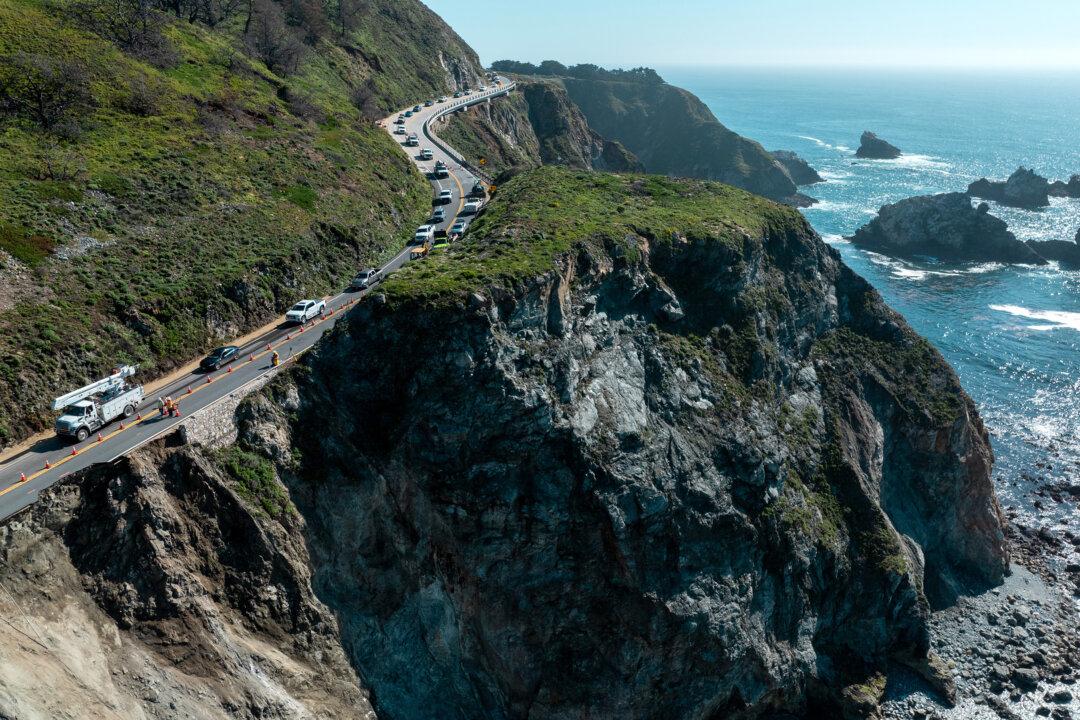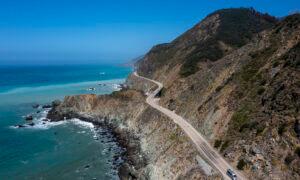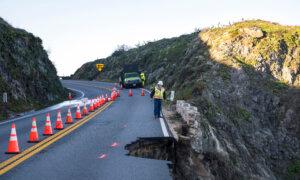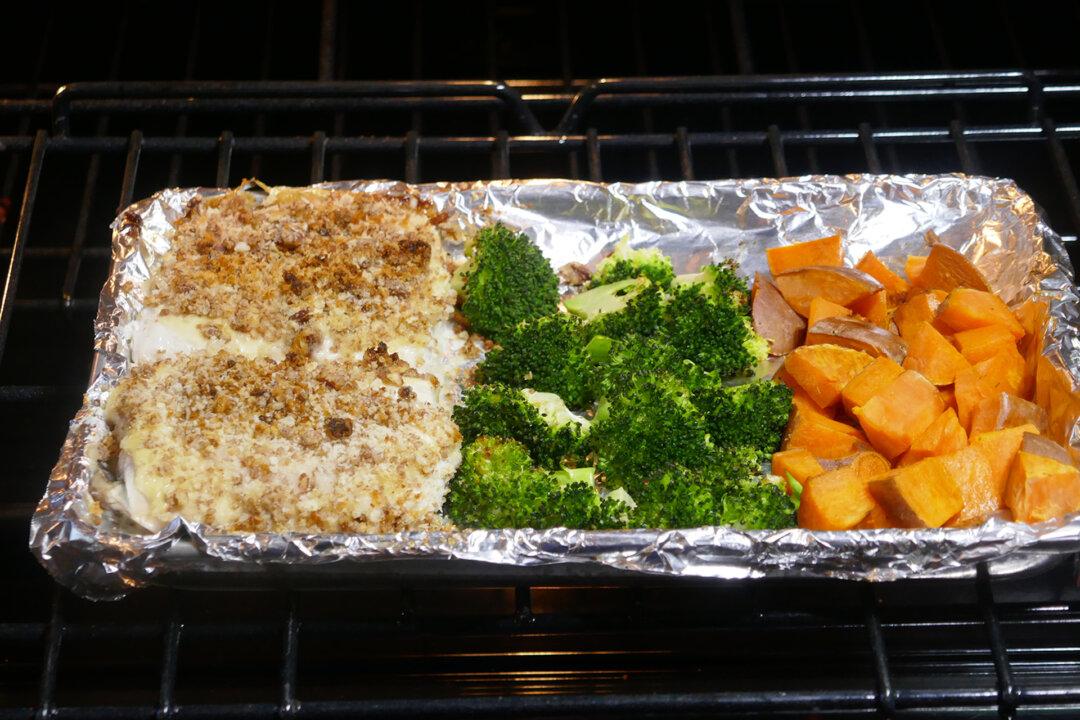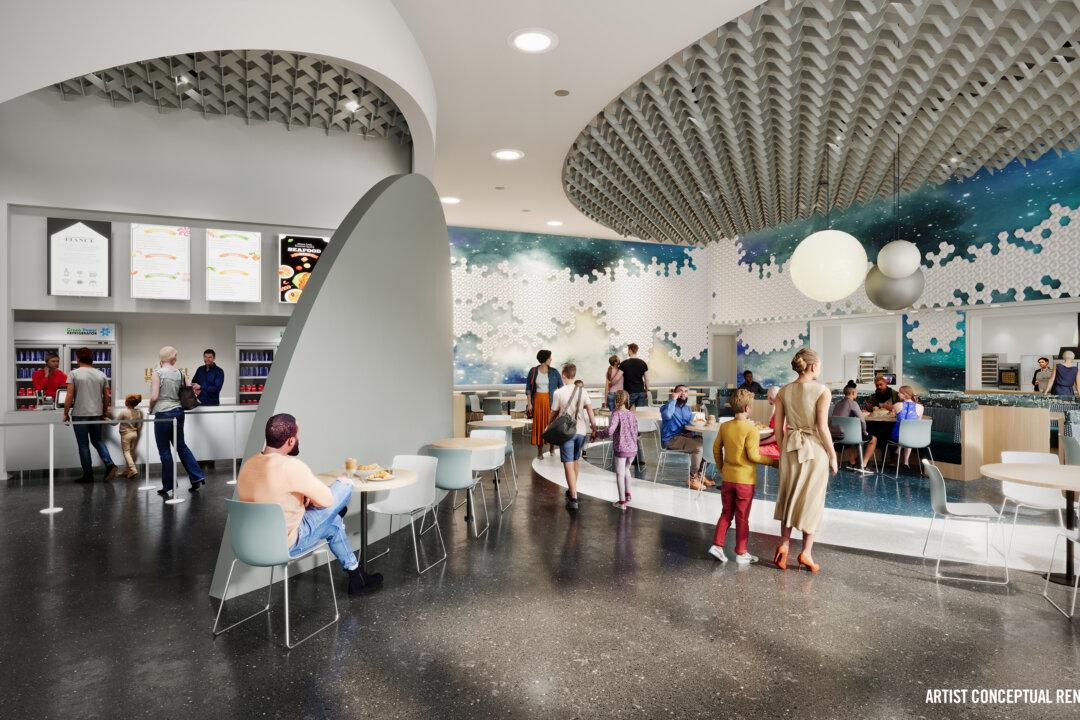BIG SUR, Calif.—Restaurants are temporarily closed. Hotels aren’t taking new bookings. State parks and campgrounds are shuttered, and people in the small coastal enclave are on edge after a large chunk of California’s iconic Highway 1 fell into the ocean last weekend. Again.
Will Big Sur’s headaches never end?
As many as 2,000 people were stranded overnight Saturday after the collapse near Rocky Creek Bridge, about 17 miles south of Monterey. People slept in their cars and vans, bunkered down at the Big Sur Lodge, which opened its conference center to stranded drivers, while others found a spot with friends.
Convoys of vehicles monitored by Caltrans crews started heading out Sunday on one lane of the highway and will continue at 8 a.m. and 4 p.m. daily for the foreseeable future.
For the stranded drivers, the worst is over. But for the restaurants, hotels, lodges, campgrounds and shops and the workers who rely on tourist dollars to stay afloat, this partial road collapse is just the latest weather-related setback to hit the region: Three other landslides triggered by last year’s torrential rains have cut off a 12-mile stretch of the scenic coastline, creating a burden for residents who must take lengthy detours to jobs and school and deterring visitors from planning road trips up and down the coast.
Entry into Big Sur is now for residents with valid identification and essential workers only. Highway 1 is closed from the north at Palo Colorado to just south of Limekiln State Park. It could be months before the route completely reopens.
“It is a big economic impact,” said Kirk Gafill, the general manager of Nepenthe restaurant in Big Sur. “Many of the businesses will probably be closing or will decrease operations.”
Gafill closed his doors Monday, Tuesday, and Wednesday to do maintenance and will reevaluate opening on Thursday. But even a brief closure can mean hundreds of dollars in lost wages and tips for restaurant and bar workers.
The Big Sur River Inn also was closed Monday and Tuesday and canceled all reservations with a promise of a full refund for booked guests, according to an outgoing phone message at the inn.
A spokesperson for See Monterey, which offers visitor’s services for the coastal county, said that they do not yet have an estimate for the economic impact caused by the latest slide and road closure.
“We do know that extended closures of Highway 1 to visitors have cost the region hundreds of millions of dollars,” said Sandy Huerta, See Monterey’s communications specialist, in an email. “The closure is not just about the economic impact from visitation, it’s also a major issue for quality of life of residents—people’s jobs, educations and livelihoods are impacted on both sides of the closure.”
Huerta said the agency hopes for a swift fix of the crumbled road.
“The hope is that there is a solution in weeks, not months, that allows the public to access Big Sur and all the businesses along Highway 1,” she wrote.
Big Sur is famous for its dramatic cliffs, towering redwoods and breathtaking ocean views, but its roads have taken a beating by current and past rainy seasons that were enough to pull the state out of its historic drought but also caused scores of road collapses, mud flows and rockslides.
The most recent storm left the San Francisco Bay Area last Friday and “just marched right down the California coast,” said Ryan Kittell, a National Weather Service meteorologist.
When Saturday’s road collapse occurred, Big Sur had been pounded by between half an inch and 2 inches of rain per hour for 48 hours, with wind gusts at some points reaching nearly 50 mph, according to the weather service.
“Water finds it lowest level, and that is when we see slides,” said Caltrans District 5 spokesperson Kevin Drabinski.
Drabinski said that in coming days, Caltrans crews will work to install 500 feet of concrete, steel-enforced barriers along the centerline of the site to protect crews and improve safety for vehicles channeling through the one open lane.
Still, much remains unknown about the extent of the damage and how long a full repair will take.
“Caltrans is assessing how best to stabilize the edge, and while we are designing that repair and coming up with a solution, we are also working on what a long-term permanent repair would look like,” Drabinski said.
Meanwhile, crews continue to make repairs at the Dolan Point Slide north of Limekiln State Park and at Paul’s Slide, south of Lucia. At Dolan Point, crews are bringing slide material down from the slope above the roadway, according to Caltrans. When the work is complete, a permanent cable net drapery system will be installed on the face of the slope, the agency said. Repairs are expected to be completed on May 1.
At Paul’s Slide, crews are working to reopen the roadway by late spring as weather and slide activity continue to impact repairs, according to Caltrans.
At the Regent’s Slide, south of Limekiln, Caltrans said a final repair design is complete. Surveys of the site show 300,000 cubic yards of material—enough to fill 90 Olympic-sized swimming pools—must be cleared from the site. Caltrans estimates that once work begins, it will take about 100 working days to finish and open the highway.

